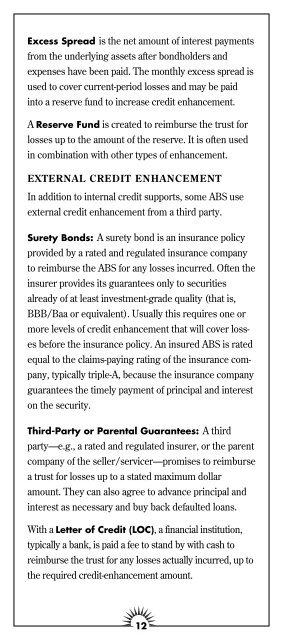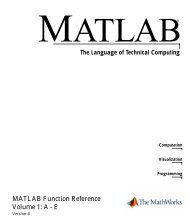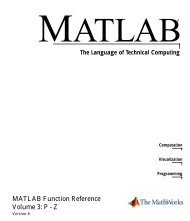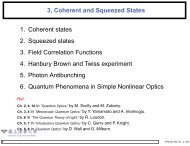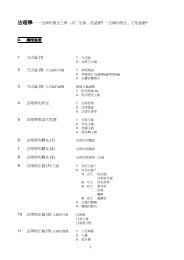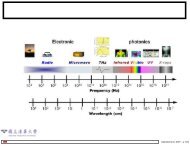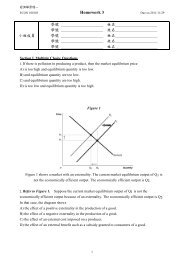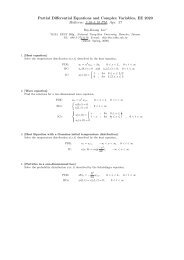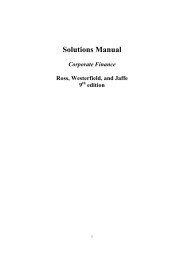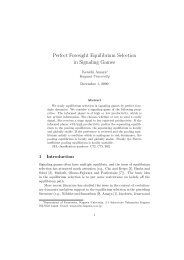assetbacked Pages
assetbacked Pages
assetbacked Pages
Create successful ePaper yourself
Turn your PDF publications into a flip-book with our unique Google optimized e-Paper software.
Excess Spread is the net amount of interest payments<br />
from the underlying assets after bondholders and<br />
expenses have been paid. The monthly excess spread is<br />
used to cover current-period losses and may be paid<br />
into a reserve fund to increase credit enhancement.<br />
A Reserve Fund is created to reimburse the trust for<br />
losses up to the amount of the reserve. It is often used<br />
in combination with other types of enhancement.<br />
EXTERNAL CREDIT ENHANCEMENT<br />
In addition to internal credit supports, some ABS use<br />
external credit enhancement from a third party.<br />
Surety Bonds: A surety bond is an insurance policy<br />
provided by a rated and regulated insurance company<br />
to reimburse the ABS for any losses incurred. Often the<br />
insurer provides its guarantees only to securities<br />
already of at least investment-grade quality (that is,<br />
BBB/Baa or equivalent). Usually this requires one or<br />
more levels of credit enhancement that will cover losses<br />
before the insurance policy. An insured ABS is rated<br />
equal to the claims-paying rating of the insurance company,<br />
typically triple-A, because the insurance company<br />
guarantees the timely payment of principal and interest<br />
on the security.<br />
Third-Party or Parental Guarantees: A third<br />
party—e.g., a rated and regulated insurer, or the parent<br />
company of the seller/servicer—promises to reimburse<br />
a trust for losses up to a stated maximum dollar<br />
amount. They can also agree to advance principal and<br />
interest as necessary and buy back defaulted loans.<br />
With a Letter of Credit (LOC), a financial institution,<br />
typically a bank, is paid a fee to stand by with cash to<br />
reimburse the trust for any losses actually incurred, up to<br />
the required credit-enhancement amount.<br />
12<br />
These first three forms of external credit enhancement<br />
expose the investor to “third-party risk,” where the ABS<br />
rating will be dependent on the creditworthiness of the<br />
institution providing the enhancement. If the institution<br />
is downgraded, then the ABS may also be downgraded.<br />
Cash Collateral Account (CCA): In this case, the<br />
issuer borrows the required credit-enhancement<br />
amount, usually from a commercial bank, and then<br />
invests that amount in the highest-rated short-term<br />
(one-month) commercial paper. Since this is an actual<br />
deposit of cash—unlike an LOC, which represents a<br />
pledge of cash—a downgrade of the CCA provider<br />
would not result in a downgrade of the transaction.<br />
Collateral Invested Amount (CIA) is similar to a<br />
subordinated tranche and either purchased on a negotiated<br />
basis by a single third-party credit enhancer or<br />
securitized as 144A private placement and sold to several<br />
investors.<br />
Fully Amortizing<br />
HOW ARE ABS<br />
STRUCTURED?<br />
Securities that return principal to investors throughout<br />
the life of the security are said to be fully amortizing.<br />
They are designed to closely reflect the full repayment<br />
of the underlying loans through scheduled interest and<br />
principal payments. They are typically backed by HELs,<br />
auto loans, manufactured-housing contracts and other<br />
fully amortizing assets. Prepayment risk is a key consideration<br />
with such ABS, although the rate of prepayment<br />
may vary considerably by the type of underlying asset.<br />
13


